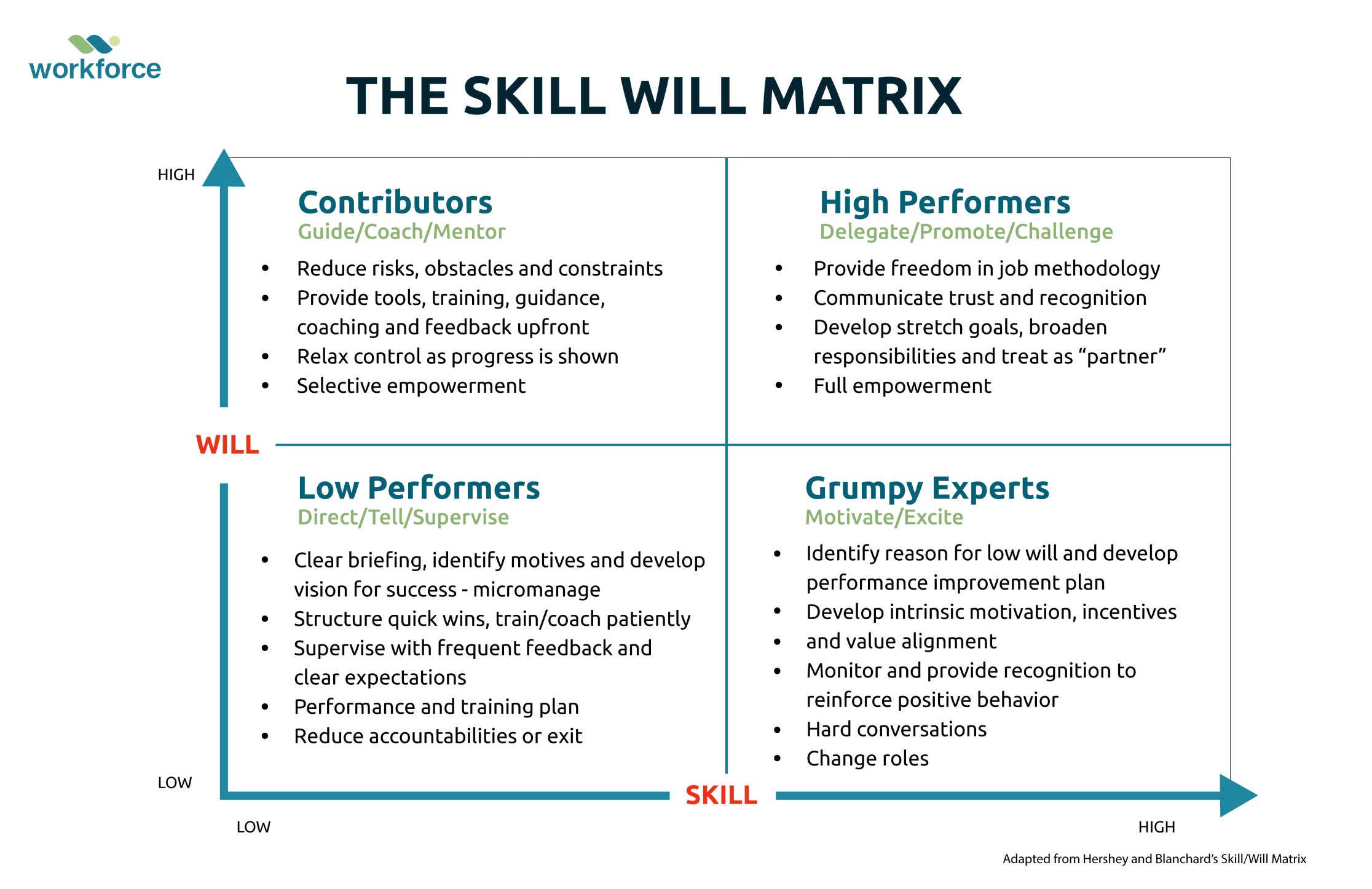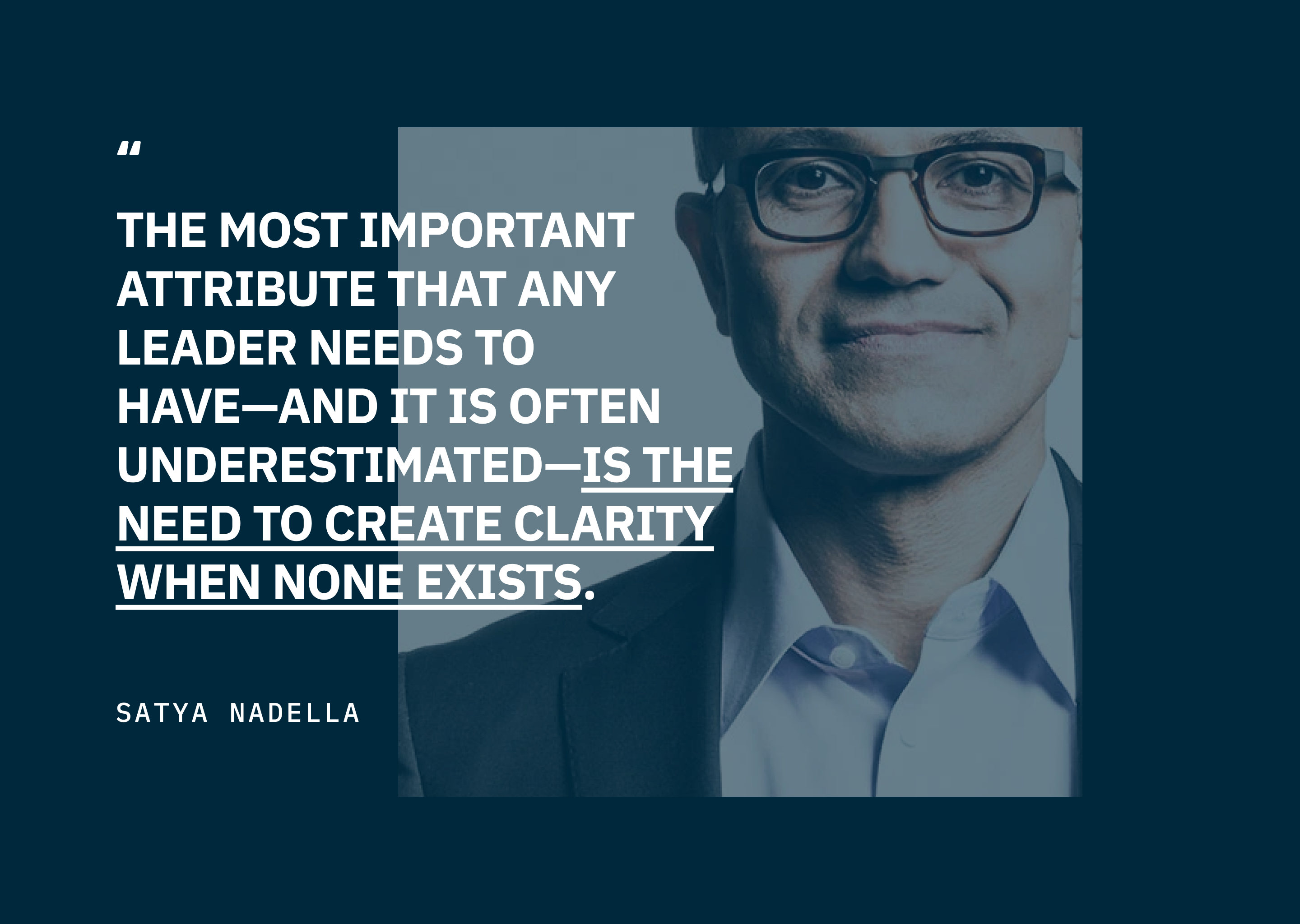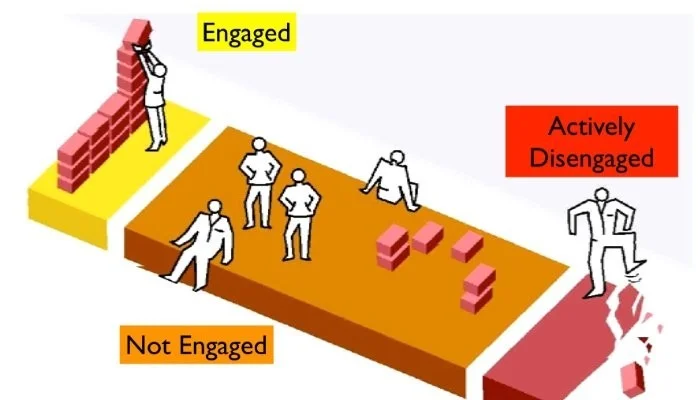In 2023, Gallup published their “State of the Workplace” report with the finding that 6 out of every 10 Employees categorises themselves as “Disengaged at work”.
What does “Disengaged” mean?
Gallup defines “Engagement” as the involvement and enthusiasm of an employee at work. If someone is “Disengaged” then they are physically present, but cognitively passive.
Why does it matter?
Well, human attention is the currency that the whole world is chasing, and at work it’s the value that employees are paid to bring. The more cognitive resource an employee applies to their role, the higher the value they provide. Gallup have a load of stats on how important this is. They believe that this is a $8 trillion gap in the economy 🤯.
So how do we take people from “Disengaged” to “Engaged”?
1. Adapt your Leadership Style.
Your people will need different approaches to motivate them based on who they are, their background, strengths, ambitions etc… A good way to start considering this is using the Skill/Will model. The “Disengaged” will be somewhere on the Low Performers/Grumpy Experts scale… so think about how your leadership approach can adapt to where they are.

2. Show them the direction with Clarity and Energy.
When I was at Microsoft and Satya established himself as CEO, one of my favourite leadership training sessions was on how to bring “Clarity and Energy” as a leader. In noisy businesses like Microsoft, it’s easy for people to be overwhelmed with the noise. If you can filter out the noise for your team and show them what to focus on, it’s a hugely beneficial in terms of their cognitive energy being directed in the areas you need them to. A simple thing like a Monday check in every week to clarify what the focus areas are in the short term, and how they relate to the overall goals of the business for that FY will help.

3. Connect your People Together.
This is one of the most powerful ways to motivate your people. Help them to feel like they belong in your team, as themselves. When people feel like they don’t need to pretend, like they can be who they are at work and all that comes with that it’s a powerful emotion. Building connections between your team isn’t about taking them out for drinks after work, or doing a team building activity, or even a personality test activity.
In my opinion, the key 3 ingredients needed to connect people together are:
- Vulnerability. If someone in your team shares something that’s hard for them, that’s a wonderful signal that they feel safe to take that risk.
- Respect and Appreciation. You don’t need to want to hang out together after work, but you do need your people to respect one another and appreciate each other.
- Communication. Effective teams are great communicators. Clear, open and honest communication means being transparent and proactive in how you talk to each other. It means you listen to understand, not just for your turn to speak. One of the most powerful ways to start this process is the “Journey Travelled” activity which I outlined in a previous newsletter.
4. Make them Masters!
There’s a lot of research that ties the idea of “Mastery” to Intrinsic Motivation, most popularised by Dan Pink’s work. People like to feel like they are learning, developing and progressing in their professional careers.
According to the LinkedIn Workplace Learning Report, 90% of companies are concerned about employee retention and providing learning opportunities is the No. 1 Retention Strategy to counter this. Mandatory Company Training doesn’t often cut it here, so the trick is to understand your people 1:1 and build from there. Try some questions in your next 1:1:
- What skills or knowledge areas are you most passionate about developing?
- What are your long term career goals, and what skills do you think you need to develop to achieve them?
- How do you prefer to learn, and can you give me an example of an experience you had that reflects this?
- Do you feel like you have any skill or knowledge gaps today that are holding you back from reaching your potential?
5. Role Model EVERYTHING.
As leaders, how you behave, what you say and don’t say, behaviours that you praise and those that you don’t tolerate, will have a huge impact on how your team show up every day. So think about the characteristics, behaviours and mindset that you think are needed in order for your team to succeed, and then show up accordingly: Praise people that exhibit them, and do it publicly! Redirect those behaviours that are not in line with your expectations (remember your culture is only as strong as the worst behaviour you tolerate) Show up in every meeting in the way you expect them to.
I hope that was helpful!
Have a think about your team today… How many of them would you categorise as Disengaged (physically present, cognitively passive)? How much value would it bring if you could improve that?




